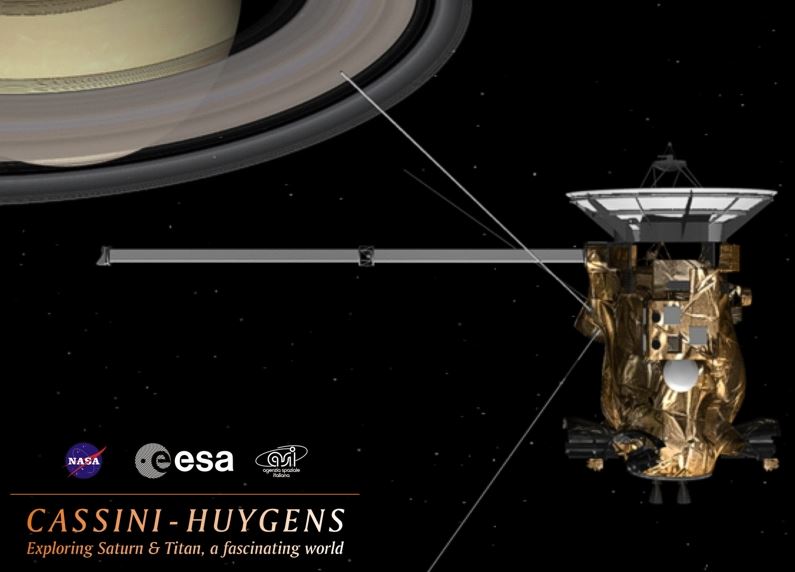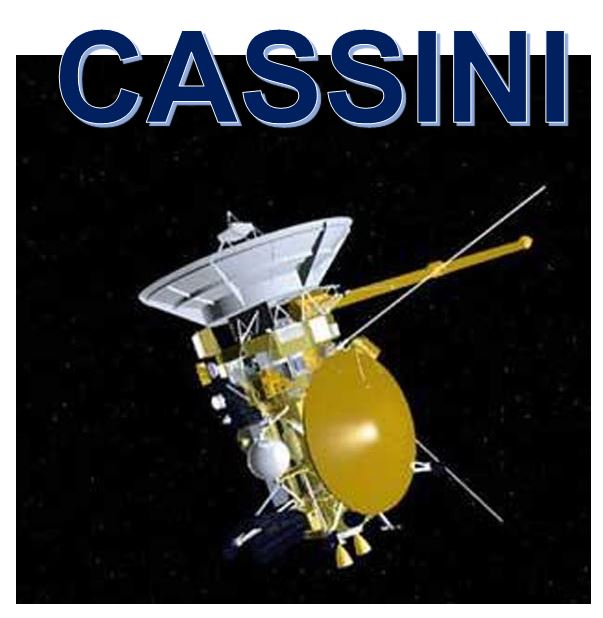The Cassini unmanned robotic spacecraft is starting the end phase of its Saturn mission. For the past twelve years, it has been flying around the sixth planet from the Sun. Saturn, the second-largest planet in our Solar System after Jupiter, is a gas giant with an average radius approximately nine times that of Earth.
The spacecraft has been flying around Saturn’s ring and moons at a relatively safe distance. It is now on the verge of undertaking a number of daring manoeuvres.
The probe will dive through the rings several times over the next nine months. Eventually, Cassini will destroy itself by entering Saturn’s atmosphere. As it is running low on fuel, it will have no choice.

This picture was made from several images taken by the Cassini spacecraft three years ago. Gordan Ugarkovic, an amateur image processor and a fan of the Saturn probe, put the images together. What we see is a portrait looking down on the gas giant and its rings. (Image: spaceplace.nasa.gov)
Protecting potential life forms from Cassini
NASA wants to make sure that the probe does not end up crashing into Titan, Enceladus or any of Saturn’s moons. If any of the moons has life as we know it, crashing into one could bring harmful contamination from Earth. We need to make sure this does not happen.
When the first Europeans started exploring the American continent, hundreds of thousands of indigenous people died because they had no immunity to some European germs. We must make sure this type of tragedy never happens again, even in outer space.
Scientists at NASA’s Jet Propulsion Laboratory in Pasadena, California, which manages the Cassini mission, say that before the spacecraft’s destruction, it should have sent us some remarkable data.
Cassini to perform amazing spacial acrobatics
Starting today, Cassini will climb high above Saturn’s North Pole several times. It will then plunge to a point just outside the F ring – the narrow ring located just outside the outer edge of the planet’s main rings.
 According to the European Space Agency: “The Cassini-Huygens spacecraft was launched at 08:43 UT on 15 October 1997 by a Titan IVB-Centaur rocket from Cape Canaveral Air Force Station in Florida, USA.” (Image: sci.esa.int)
According to the European Space Agency: “The Cassini-Huygens spacecraft was launched at 08:43 UT on 15 October 1997 by a Titan IVB-Centaur rocket from Cape Canaveral Air Force Station in Florida, USA.” (Image: sci.esa.int)
Cassini is scheduled to carry out twenty such orbits, during which some of the gasses and particles that make up the F ring will be sampled.
Earl Maize, Cassini project manager at the Jet Propulsion Laboratory, said:
“Even though we’re flying closer to the F ring than we ever have, we’ll still be more than 4,850 miles (7,800 kilometers) distant. There’s very little concern over dust hazard at that range.”
The F ring is a complex and constantly-changing phenomenon. Images sent from the probe have shown structures like wispy filaments, bright streamers, and dark channels that appear and develop within just a few hours. The ring is only about 800 km (500 miles) wide. It has a denser region about 50 km (30 miles) wide.
The probe will initiate a number of dives to within the inner edge of the rings, as well as Saturn’s atmosphere, as from 22nd April, 2017. It will get extremely close to the gas giant – within 2,000 km (1,232 miles) of its top clouds.
During its first two orbits, the probe will pass directly through an extremely faint ring produced by super-tiny meteors striking Epimetheus and Janus – two small moons.
These scheduled dives will hopefully give us interesting data on the interior of Saturn, as well as some spectacular images of its moons and rings.
#Saturn’s outer ring fades into the background as moon Prometheus’ surface is revealed in detail. 📸: @CassiniSaturn https://t.co/jSFwKkA2Mu pic.twitter.com/UsKUPn51b5
— NASA JPL (@NASAJPL) November 21, 2016
Cassini and its Ring-Grazing Orbits
Linda Spilker, Cassini project scientist at NASA’s Jet Propulsion Laboratory, Pasadena, California, said:
“We’re calling this phase of the mission Cassini’s Ring-Grazing Orbits, because we’ll be skimming past the outer edge of the rings. In addition, we have two instruments that can sample particles and gases as we cross the ringplane, so in a sense Cassini is also ‘grazing’ on the rings.”
Michele Karen Dougherty FRS, Professor of Space Physics at Imperial College London, who was distinguished for her scientific leadership of the Cassini-Huygens mission, said in an interview with BBC News:
“One of the big outstanding questions at Saturn, for example, is: we don’t know how long a day is. We have a large error. It’s 10.7 hours plus or minus 0.2 hours.”
“Come and ask me afterwards but I think what we learn about the internal structure of the planet could be among the great discoveries of mission.”
#Cassini is ready to dive into the #Saturn‘s ringshttps://t.co/5gmoSz8jpU (IT) pic.twitter.com/P7Gop8SARf
— Elisabetta Bonora (@EliBonora) November 24, 2016
Prof. Dougherty said that many of the mysteries of Saturn are similar to those of Jupiter. While Cassini explores the ringed planet, the Juno spacecraft has been doing the same with Jupiter.
Prof. Dougherty said:
“It’s as if we’re about to do a whole new mission at Saturn – a Juno-type mission at Saturn.”
The Cassini-Huygens mission is a cooperative project of the US space agency NASA, the European Space Agency (ESA), and the Italian Space Agency (ASI – Agenzia Spaziale Italiana). NASA’s Jet Propulsion Laboratory (JPL), part of the California Institute of Technology (Caltech) in Pasadena, California, manages the mission for NASA’s Science Mission Directorate in Washington. The Cassini orbiter was designed, developed and assembled by JPL.
Video – Cassini and its ring-grazing orbits
This NASA Jet Propulsion Laboratory video explains what will happen during the final year of Cassini’s operations. It will fly closer to Saturn’s rings than it has since its arrival in 2004. Its orbits will bring the probe closer to Saturn than any spacecraft has dared to go before.

